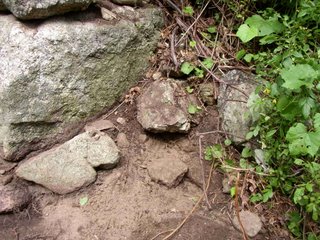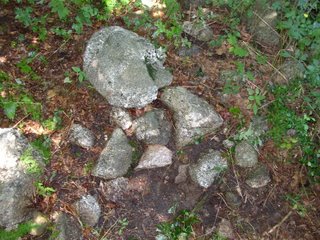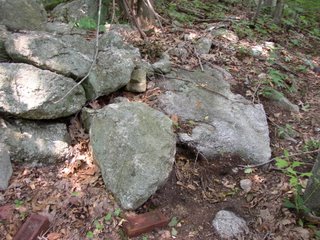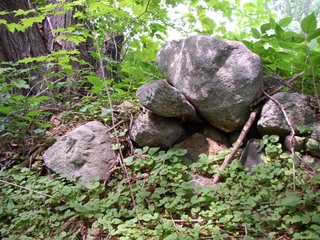So, you may be wondering, "What do the next point stones look like?"
Here's the next one...
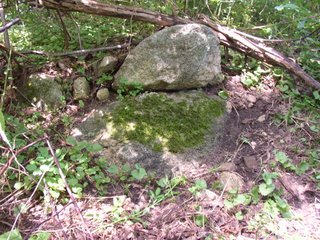
Natural forces moved the top stone, as did the guy doing roadside mowing for my town. There was a fresh mark last year, but I can't see it now...
I find I don't see much in it today...
Then there's the one after that...

That was spring time and just today
I needed some tomato stakes, so I cut some from around this point stone...


And since Blogger is actually letting me post photos - unlike the past two days - here's the next most visible one, much further down, past the area disturbed when my septic system was re-done many years ago and the guy put in a little access-way with his back hoe/loader.

There's a gentle rise from the road to the stone row. The ground rises sharply above the zigzag, levels out in the Old Garden area. If I stood on the stone, I'd be just a little bit beloweye level to the Garden...

These might have been tossed from the garden, but I think I see abrader stones, some hammer stones, and maybe in time I'll notice other sorts of tools etc. One of my thoughts about these rows is that it's handy for stone tool storage, especially if arrainged in a turtle-like manner - hammer stones, hand axes, abraders, etc. make good feet...







